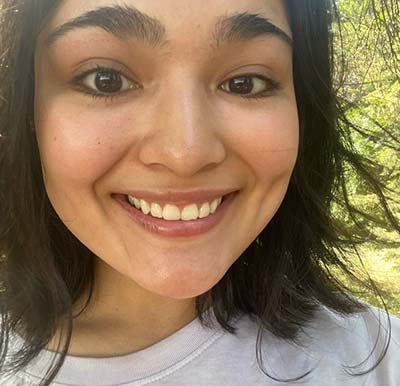
Image courtesy Zoe Muccatira, all rights reserved.
In Wiki Education’s Wikipedia Student Program, students are assigned to edit a Wikipedia article on a course-related topic by their higher education instructor. For some students, they pick something they’re already deeply familiar with; for others, it’s a personal interest. But for Zoe Muccatira, a junior at North Dakota State University, she picked her topic on the mineral ophirite – a mineral she knew nothing about prior.
Zoe was taking a course taught by Dr. Bernhardt Saini-Eidukat on Mineralogy. Dr. Saini-Eidukat had students select a mineral without an existing Wikipedia page from a list of minerals recognized by the International Mineralogical Association, and asked Zoe and her classmates to create them.
“After doing research on the mineral I found out that it was really interesting: it is the first known mineral with a tri-lacunary Keggin polyanion – a structure known in synthetic compounds, but was unknown naturally,” Zoe explains. “I thought that the Wikipedia assignment was a nice addition to our regular coursework and gave us an opportunity to pick a mineral of our own interest to study more on and discover minerals we had not been introduced to in class. For most traditional assignments for Mineralogy, we spent time learning about more well known minerals of different groups classified by anion or anionic complex.”
Minerals are of particular interest to Zoe, who grew up in Hoople, North Dakota, a rural area with agricultural influence that had started Zoe on her path of loving nature. She’s studying geology and biology with an emphasis in ecology and conservation science.
“Growing up in the countryside on a farm surrounded in a sheath of nature was really the foundation of my appreciation for the Earth,” she says.
And Wikipedia was a natural extension of that. Writing for Wikipedia gave her key skills in science communication – and an opportunity to shape the public’s understanding of ophirite.
“I am mainly interested in environmental, evolutionary biology, and evolutionary ecology research. It is important that I communicate my research in a way that is effective and accessible to many – Wikipedia is a great platform for this reason,” Zoe says. “If someone wants to find out more about a specific topic, it is likely that one of the first search results will be a Wikipedia page on that topic.”
She admits she was initially intimidated. But with guidance from her professor and Wiki Education’s training modules on how to edit Wikipedia, Zoe found the experience not particularly difficult. She said it was more fun than writing a traditional term paper. Organizing, adding inboxes, and other aspects led to an exciting visual experience.
“I am glad that I had the opportunity to create a Wikipedia article in my mineralogy class because it is not something I would have initially done on my own. I wanted my Wikipedia page to look professional, and fit all the requirements of what makes a good, informative Wikipedia page not only for my professor to grade, but for those on the internet who would find it soon after it had been published. I was proud of myself for creating the page, and it was amazing being the first person to add information about such a unique mineral on Wikipedia,” Zoe says. “In the future, I would like to edit Wikipedia again – whether it be creating a new page or helping edit someone else’s. It is an easy and fun way to add information in my field.”
Wiki Education’s support for instructors who want to teach with Wikipedia are available at teach.wikiedu.org. Our support for STEM classes like Zoe’s is available thanks to the Guru Krupa Foundation.

Super cool! I wish this young lady all the best!!